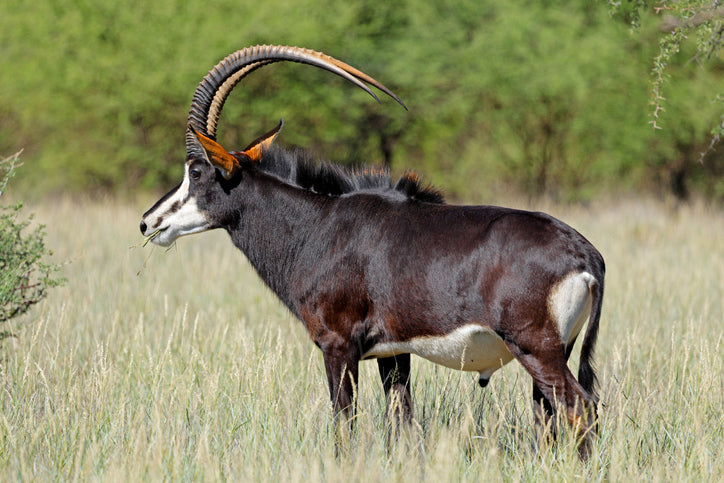
The Sable Antelope
Share
The Regal Sable Antelopes of Kruger National Park 🦌
In the grasslands and wooded areas of Kruger National Park, the Sable Antelope stands out for its impressive stature and majestic bearing. Known for their beautiful glossy black coats and long, curved horns, these antelopes are among the most photogenic and admired species in the park.
Elegant Appearance: Sable Antelopes are distinguished by their robust build and striking colouration. Males have darker, almost black coats as they mature, while females and young are more of a chestnut to dark brown. Their prominent white underbelly, cheek, and chin contrast dramatically with the darker markings around their face. 🖤🤍
Horns and Defence: Both male and female Sable Antelopes have ringed horns that arch backward, which can grow over 1.2 metres long. These horns are not just for show; they are a vital defence mechanism against predators. When threatened, sable antelopes can be formidable opponents, using their horns effectively to fend off attacks. 🦏🛡️
Habitat and Diet: Sable Antelopes are selective grazers, preferring fresh mid-length grasses. They inhabit savanna woodlands where these grasses are abundant, and they can maintain some cover. Access to water is crucial for them, and they drink regularly, which often dictates their movement patterns. 🌾💧
Social Structure: These antelopes are social creatures, typically found in herds that consist of females and a single dominant male. Bachelor groups are also common, where young males live together until they can challenge for control of a herd or establish their own. 🦌👥
Fun Fact for Kids: Did you know that the Sable Antelope is often considered a symbol of grace and strength? Their confident posture and graceful movements make them a favourite subject in African folklore and art. 🎨📖